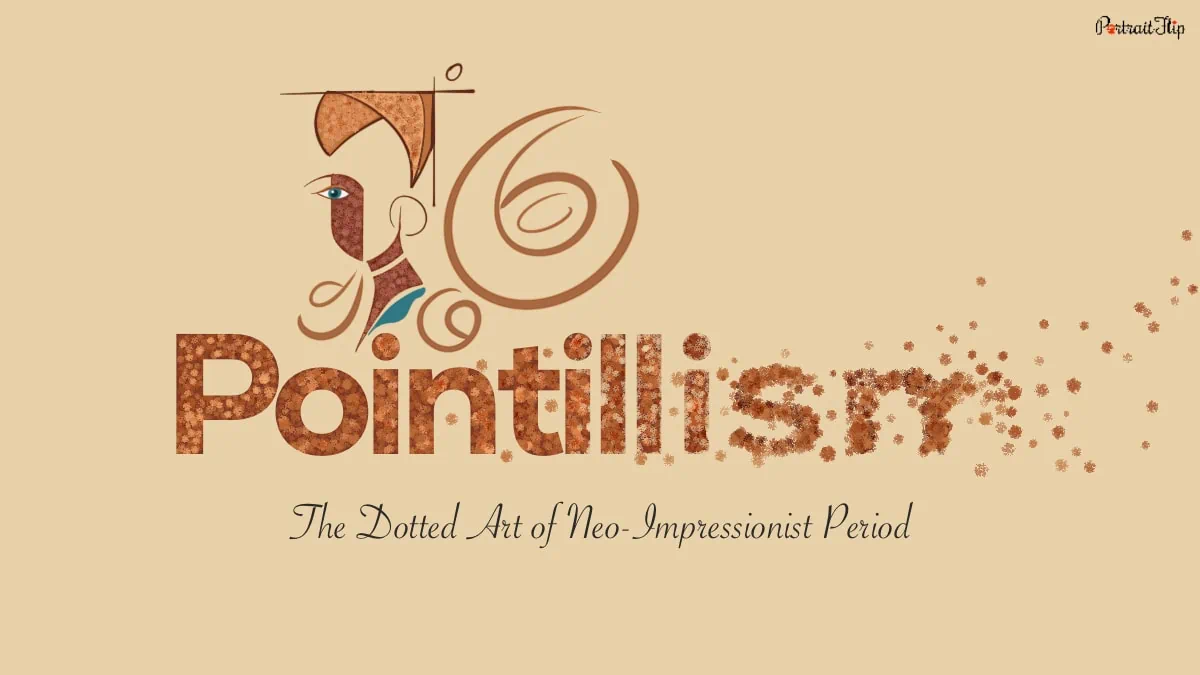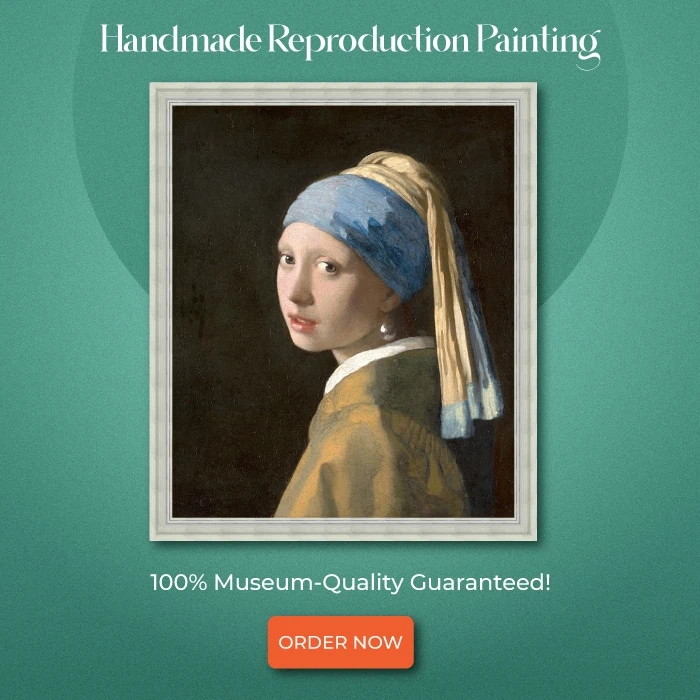There is a saying, “drops of water can turn into an ocean.”
Quite familiar, right?
There is another saying that is somewhat the same.
“Dots by dots can turn into a painting.”
Well, I just made that up but some famous artists created history with this quote.
You must be wondering what I’m trying to conclude by quoting these.
Have you heard about pointillism?
Pointillism is a movement producing art that involves painting with separate dots side by side that consist of mixed colors to form an image, artwork, or pattern.
Getting all over your head?
Let me elaborate with some visuals and examples that will help you understand it in the simplest way.
Disclaimer: Keep your glasses on to witness a movement that requires keen observation!
Table of contents
What is Pointillism? (6 Things You Need to Know)

Take a close look at the above painting.
What did you observe?
Tiny dots placed next to each other eventually form a painting, right?
Now you know what pointillism is!
Pointillism was a revolutionary painting technique introduced in the mid-1880s by George Seurat and Paul Signac.
This art movement was a reaction against the triumph of the Impressionism movement.
There are six key points to learn while exploring the pointillism movement:
- Pointillism involves pure, unmixed shades that are carefully placed beside each other. According to Seurat and Signac, this technique will blend the colors to create a more striking picture than the colors mixed on a palette.
- The art was invented with small dabs of color, which were made famous by Post-Impressionist artists.
- The name of the movement derives from a review of Seurat’s work by a French critic who used the expression peinture au point (painting by dots).
- Pointillism is considered a Neo-Impressionist movement due to the use of the divisionist technique.
- Musical metaphors were often used to define pointillism, which would show the colored dots in a kind of harmony.
- With its color combination, pointillism influenced Fauvism and other movements as well.
You may wonder why artists undergo such complex techniques to create art, right?
Well, the answer is simple: as other artists, they also wanted to remodel and present a new definition of art in the world.
But the question is, why?
Why a new movement? Was it really an invention or an accidental movement?
The 1886 Saga of Pointillism Movement
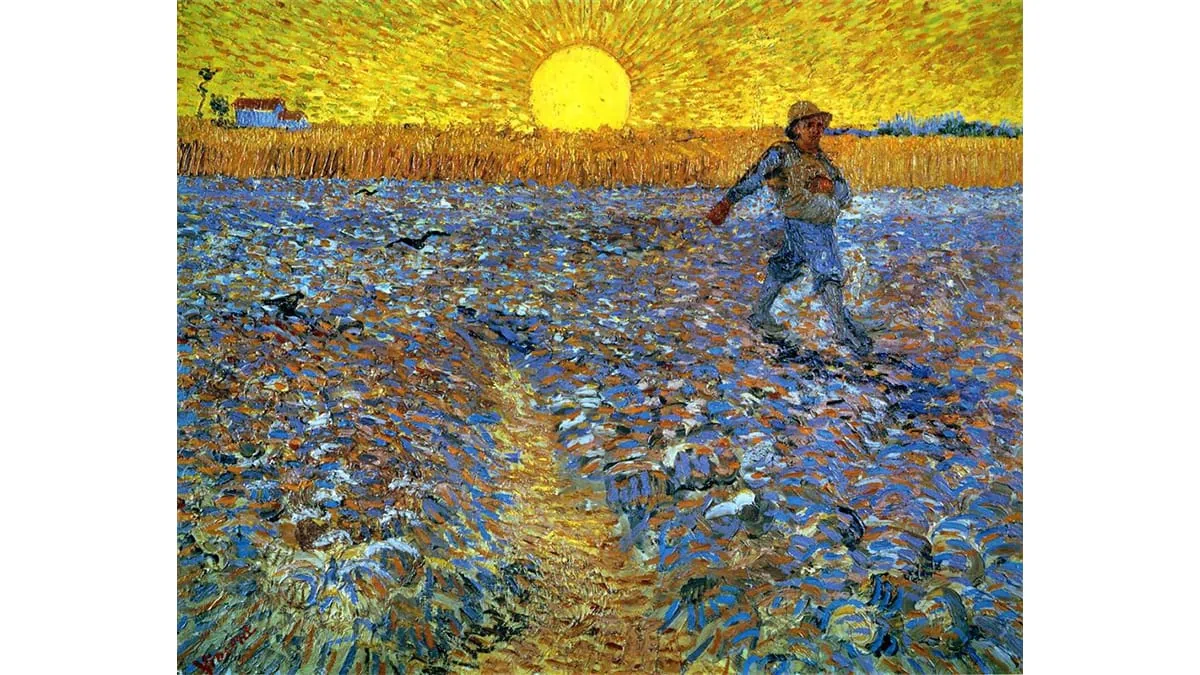
Inspired by Impressionist paintings, two French artists started to recreate art that depicts lights and overwhelming brightness.
They began to place small dabs of color on the canvas.
Eventually, a pattern was created that transformed into a beautiful image when viewed together.
Therefore, pointillism was born.
The two French artists were Georges Seurat and Paul Signac, who invented pointillism and became the dot painters of the world.
It was developed in response to the Impressionist movement.
However, Impressionism was still the subject of many individual artists, which made pointillism disagreed with by many.
Along with Seurat and Signac, many notable artists joined the movement and became painter of dots.
Painters like Pablo Picasso and Vincent Van Gogh experimented with pointillist styles in their careers.
As I mentioned above, the term “pointillism” was made up by a French critic, Félix Fénéon, to mock the absurd technique.
But the popularity of this new art made that mocking turn into good humor.
People adopted the word pointillism as its official name.
Interesting fact: Before it was known as pointillism, the style was referred to as “Divisionism.”
Art established itself during the period of Neo-Impressionism in order to mimic the art movement.
The idea was to make the viewers blur the dots together to form a detailed image.
While artists like Van Gogh and Claude Monet often used dabbing techniques in their work, the idea extended to greater heights.
As more artists adopted pointillism, it started being referred to as “dotted art.”
It became the most forward-thinking art style, which impacted movements like Cubism and Pop Art.
Techniques: How to Paint Pointillism
Here is where you will need your glasses.
If you ask me how to paint pointillism, I’ll simply say to lift your brush and start creating subjects as dots in art.
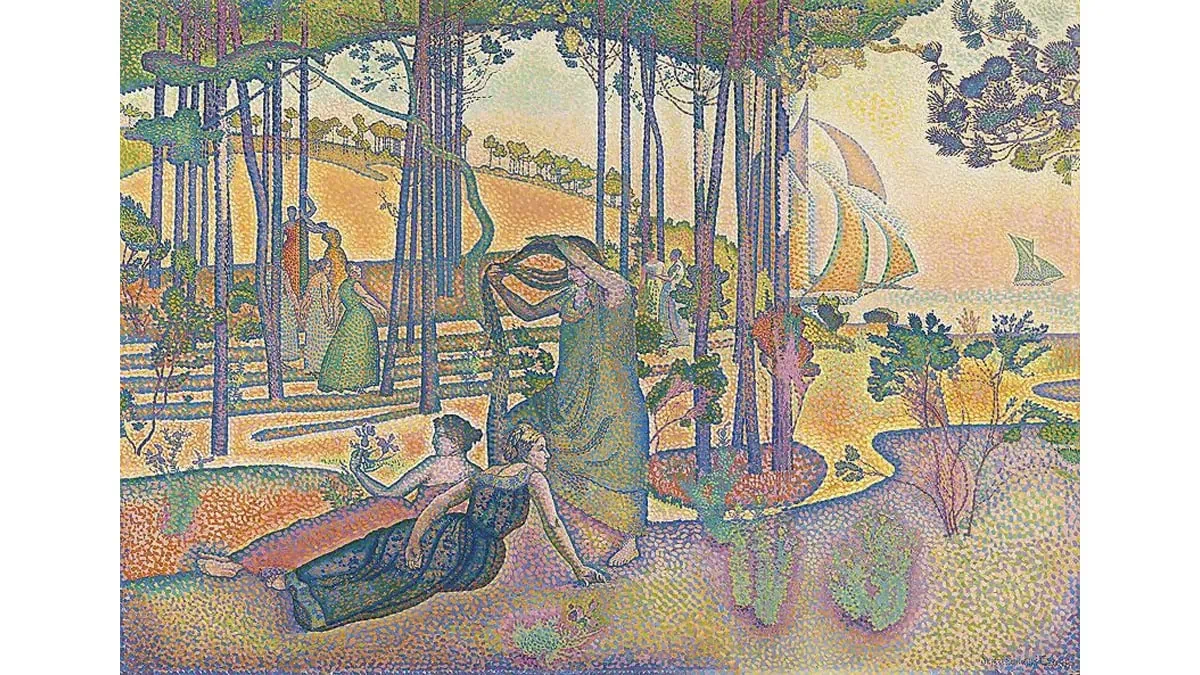
The technique is similar to the four colors of CMYK, i.e., cyan, magenta, yellow, and black.
These colors combine to produce different shades.
But there are three combinations that helped form this art.
Eye of Science
Pointillism was a scientific approach in order to produce art.
French chemist Michel Eugène Chevreul wrote a book while researching ways to improve the strength of colors.
He concluded that the tapestries relied on the visual impact and the contrast of complementary colors.
This theory influenced pointillist art.
Unmixed Colors
The dots were used in a pure and unblended manner during the creation of the painting.
These dots were carefully placed beside each other to form an effortless view for the audience.
Due to this strategy, the artist never mixed colors.
The smaller the dots, the clearer the image will be.
Features Defining Pointillism Art
The characteristics also play an important role when painting pointillism.
To maintain a balance in art, tones and colors need to be kept stable.
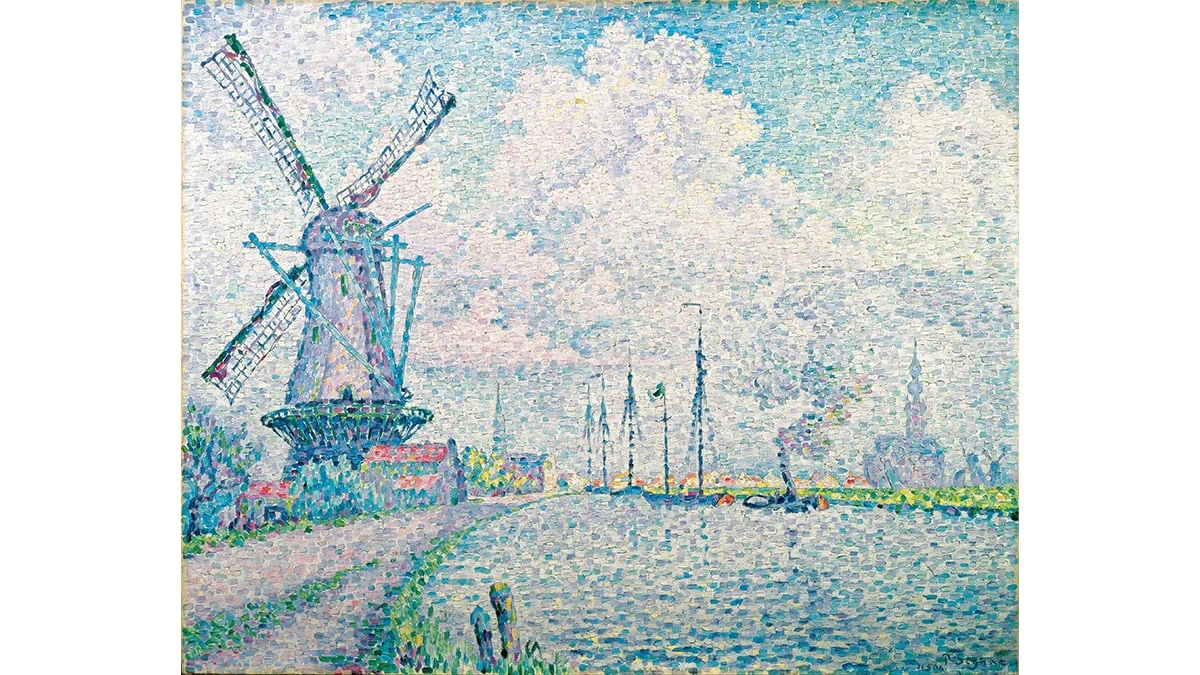
When you set a particular tone for the painting, it creates intensity.
They use different varieties of the same shade without blending them together.
One of the main characteristics of pointillism is that the dots can only be differentiated from a certain distance.
How amazing that minute dots create wonders!
But people mostly consider pointillism and divisionism to be the same.
Well, they are right as well as wrong.
Let me explain how.
Variation Between Movements
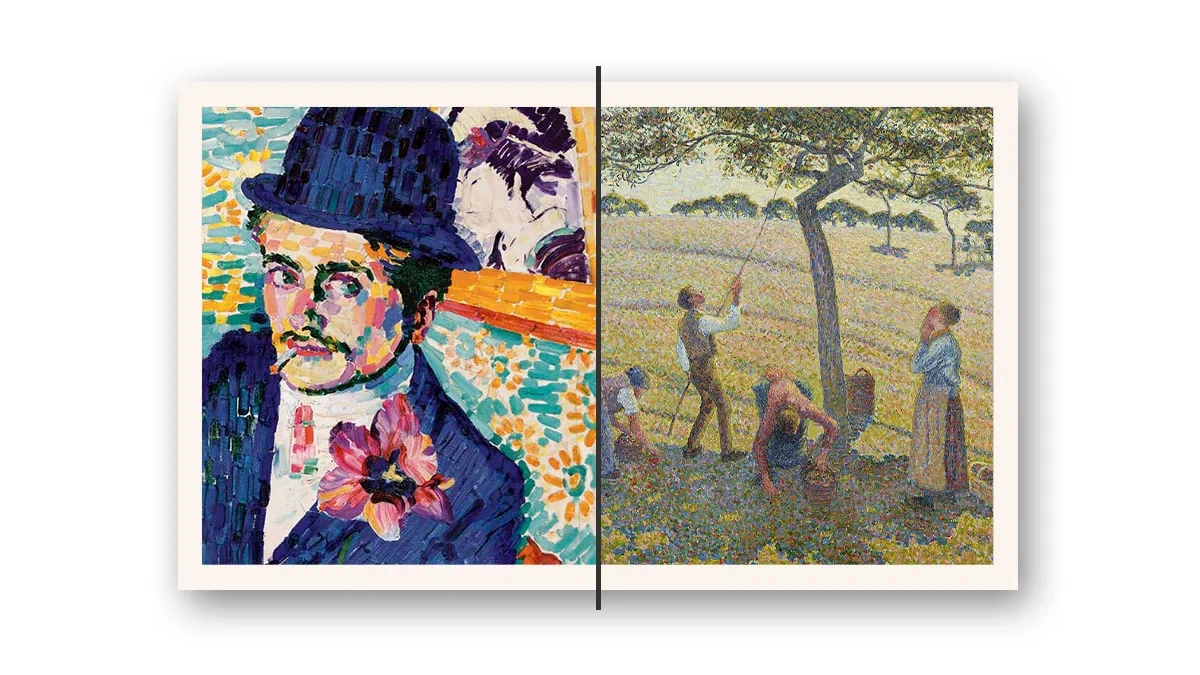
There is a bit of confusion when people refer to pointillism as divisionism or dotted art.
The audience thinks of all three as one movement.
It’s somewhat correct, with a minute difference.
Pointillism vs. Divisionism:
| Pointillism | Divisionism |
| Pointillism consists of small dots. | Divisionism consists of bigger brushstrokes. |
| The dots are merged together to form an image. | Colors are engaged but seem divided. |
Pointillism vs. Dotted Art:
| Pointillism | Dotted Art |
| The pointillism word is used by art historians. | Dotted Art is used in a more informal setting among general public |
| Refer to the professional | Refers to the amateur artists of today. |
Apart from these, there is nothing else that stands out between them.
Suggested read: A Brief Summary of 24 Renaissance Facts
Top 5 Pointillism: Artists and their Art
1. Georges Seurat (1859-1891)

Georges Seurat was the first pioneer of the art movement pointillism, whose short career made a huge impact on the art community.
His techniques helped him found the Neo-Impressionist movement.
He was mathematical in his approach with logical abstractions in art.
One of the most famous pointillism paintings by Georges is “Bathers at Asnières.”

This is an oil on canvas painting that shows a suburban, placid Parisian riverside scene.
Can you tell that the painting is made of dots by looking at it?
It’s impossible, and a brilliant work by Georges!
Other pointillism paintings by Georges Seurat: A Sunday Afternoon on the Island of La Grande Jatte, Circus Sideshow, Young Woman Powdering Herself, Le Chahut, and more.
2. Camille Pissarro (1830-1903)

Here comes the artist with the simplest subjects.
Camille portrays ordinary life in his paintings.
He ought to explore new themes and techniques that allow him to depict the ordinary in the most realistic way.
He embraced pointillism in art after he met Seurat and Signac.
His works took a turn when Camille started using pointillism in his paintings.
I mean, just look at his “Hoarfrost, Peasant Girl Making a Fire.”
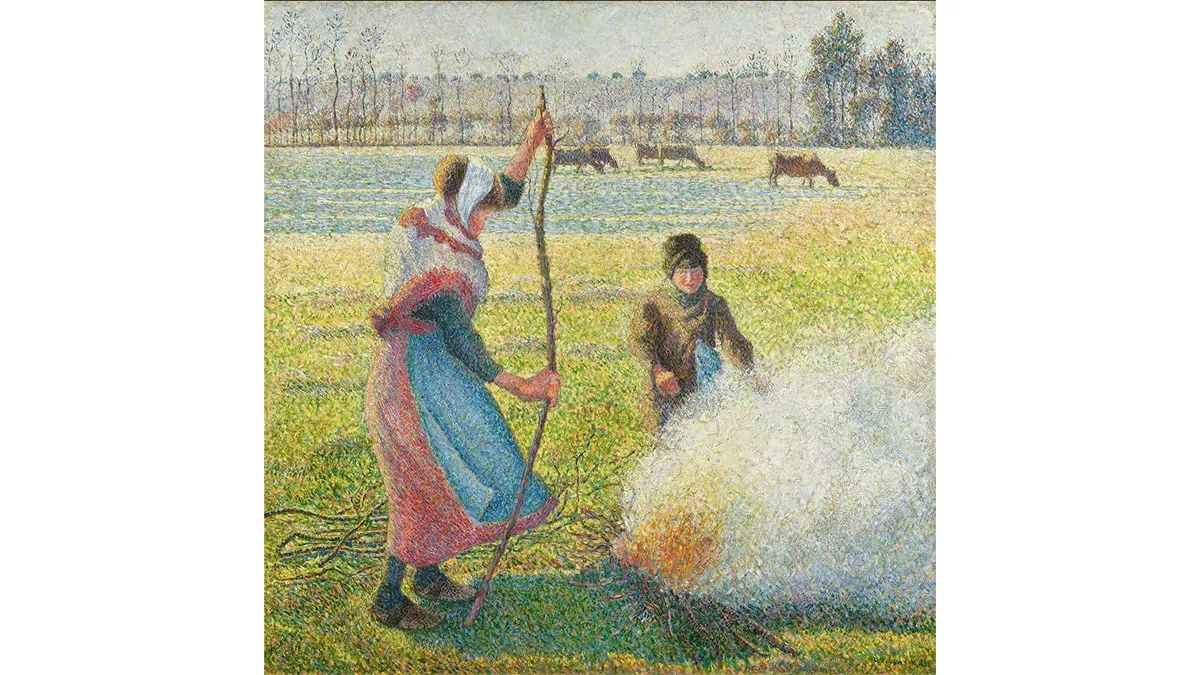
This artwork is an example of how Pissaro manipulated complex subjects.
Didn’t get me?
Look at the art again.
Do you feel cold and warm at the same time?
This is because Camille depicted the intricacies between light and surroundings.
Pissaro was able to create an extraordinary and unique illustration of fire, smoke, cold air, and low rays of sun to produce this art.
Even humans are portrayed in warm clothes in their ordinary daily lives.
A to-the-point work by Camille Pissaro!
Other pointillism paintings by Camille Pissaro: Late Afternoon in Our Meadow, Prairie avec vaches, brume, soleil couchant à Éragny, Boulevard Montmartre, and more.
Suggested read: Realism Art Movement
3. Vincent van Gogh (1853–1899)

The famous Dutch painter with the ability to create rhythm in art—who else if not Vincent Van Gogh?
After visiting George’s studio, Vincent exclaimed that he came into contact with a “revelation of color,” which led him to begin painting using the pointillism technique.
People who knew Vincent hardly agree that he would continue with such a complex movement as pointillism.
He created some artwork and soon moved within a short period of time.
Can you name that well-known painting?
No, its not Starry Night! He created his “Self-Portrait” in 1887 using the pointillism method.

The part that makes this pointillist painting stand out in a crowd is its color.
Most dot artists use cool and vibrant colors to bring light to their paintings.
But this wasn’t the case with Vincent.
He portrayed passionate and emotional language with the colors blue, green, orange, and red.
No wonder his paintings are priceless.
Other pointillism paintings by Van Gogh: The Seine at Courbevoie, Asnières (Van Gogh Series), and more.
Suggested read: Famous Paintings by Van Gogh
4. Paul Signac (1863 – 1935)

Another founder of the pointillism movement is Paul Signac.
Along with George Seurat, Signac studied the concept of pointillism as a student of Seurat.
After George’s death, Signac continued the work and created an enormous legacy of artwork that is recognized today.
One of the most renowned pointillism works by Paul Signac is “Opus 217.”

This painting of dots is the most detailed work where Feneon holds the white flower in a still manner with the motion and music surrounding it.
Opus indicates the set of compositions shown separately.
All the elements add vibrancy to the art, which gives the painting a lively appearance.
Other pointillism paintings by Paul Signac: Gasometers at Clichy, The Demolisher, Lighthouse at Groix, The Pine Tree at Saint Tropez and more.
5. Théo van Rysselberghe (1862-1926)

The Belgian painter Théo van Rysselberghe was another prominent pointillism artist.
He experimented with pointillism and often painted portraits of his wife and daughter.
However, his iconic pointillism artwork depicts landscape paintings and seascapes.
His famous paintings with dots are called “Family in the Orchard.”
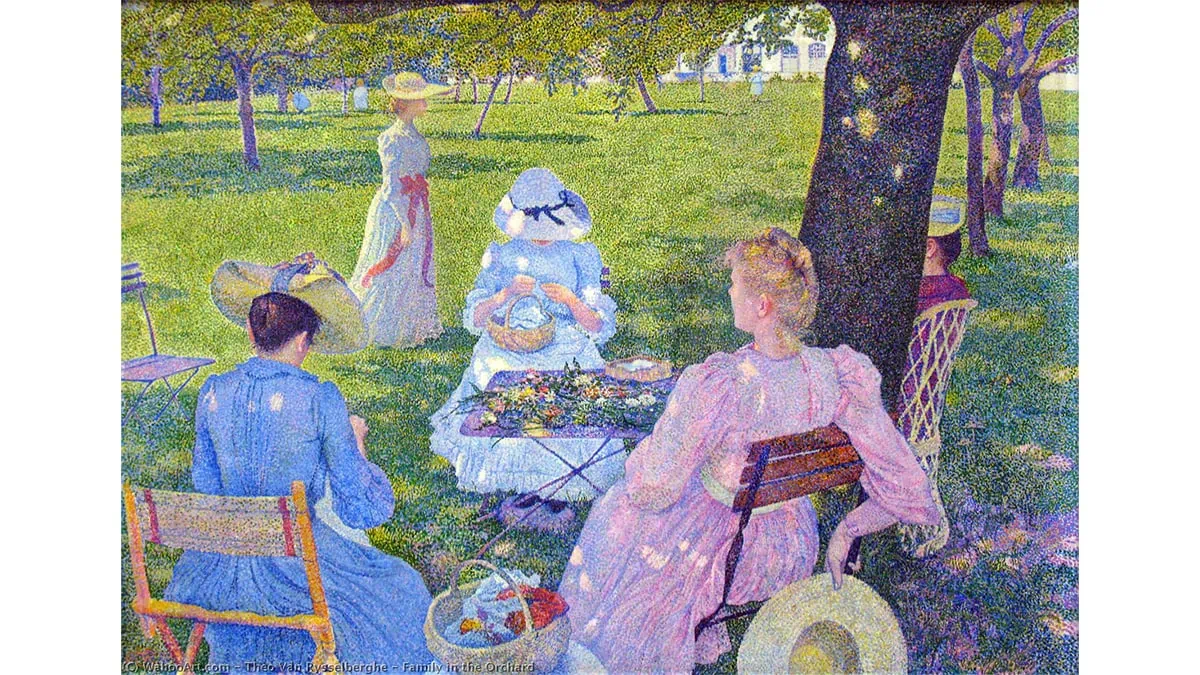
Look at this cheerful point of work.
The choice of colors, surroundings, and subjects describes the painting as a whole.
A work of a brilliant pointillist painter!
Lastly,
There are many well-known pointillism painters who created history with their hands.
The movement has influenced numerous contemporary artists to produce dotted paintings.
It also had a huge impact on the cubism and surrealism movements.
I would agree that pointillism requires a lot of patience due to its complexity.
But owning one can be an easy task, right?
I wonder how these amazing masterpieces will look on my walls. Do you have the same thought?
Explore our reproduction paintings and order one today!
Writer Says Hi!
How was the reading, my art lovers?
I hope I was successful in conveying the information you were looking for in an interesting way.
Now is your chance to unravel those questions that have been running through your mind since the read.
Reach out to me via comments, where I can reply to your questions and suggestions.
I would love to hear your valuable feedback.
I will be back with my next piece soon. Till then, keep reading and exploring!
FAQs
Pointillism in art is a technique that involves placing small dots in close form to create a large image.
A dot painting is known as pointillism and is also referred to as divisionism.
George Seurat and Paul Signac were the pioneers of the pointillism movement.
Another name for pointillism is divisionism or chromo-luminarism.



